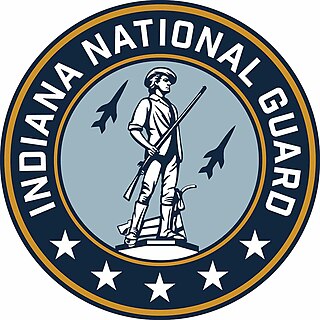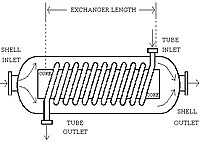
An ion thruster, ion drive, or ion engine is a form of electric propulsion used for spacecraft propulsion. An ion thruster creates a cloud of positive ions from a neutral gas by ionizing it to extract some electrons from its atoms. The ions are then accelerated using electricity to create thrust. Ion thrusters are categorized as either electrostatic or electromagnetic.

Chemical, biological, radiological and nuclear defense or NBC protection is protective measures taken in situations in which chemical, biological, radiological or nuclear hazards may be present. CBRN defense consists of CBRN passive protection, contamination avoidance, and weapons of mass destruction mitigation.

Solar electric propulsion (SEP) refers to the combination of solar cells and electric thrusters to propel a spacecraft through outer space. This technology has been exploited in a variety of spacecraft designs by the European Space Agency (ESA), the JAXA, Indian Space Research Organisation (ISRO) and NASA. SEP has a significantly higher specific impulse than chemical rocket propulsion, thus requiring less propellant mass to be launched with a spacecraft. The technology has been evaluated for missions to Mars.

Exercise Red Dragon is a recurring civil defense readiness exercise conducted in Fort McCoy, Wisconsin held during the summer, training Army Reserve, National Guard units, and civilian agencies, such as fire departments, police stations, hospitals, and non-governmental organizations to improve the Defense Support of Civil Authorities capabilities for large-scale chemical defense missions.
The Newport Chemical Depot, previously known as the Wabash River Ordnance Works and the Newport Army Ammunition Plant, was a 6,990-acre (28.3 km2) bulk chemical storage and destruction facility that was operated by the United States Army. It is located near Newport, in west central Indiana, thirty-two miles north of Terre Haute. The site was used as a production site for the solid explosives trinitrotoluene and RDX, as well as for heavy water. It also served as the production site for all of the U.S. military's nerve agent VX, when it was in use. All VX nerve agent at the site was neutralized by August 8, 2008. It was the third of the Army's nine chemical depots to completely destroy its stockpile.

The Bangladesh Army is the land warfare branch and the largest component of the Bangladesh Armed Forces. The primary mission of the Army is to provide necessary forces and capabilities to deliver the Bangladeshi government's security and defence strategies and defending the nation's territorial integrity against external attack. Control of personnel and operations is administered by the Army Headquarters, Dhaka. The Bangladesh Army is also constitutionally obligated to assist the government and its civilian agencies during times of domestic national emergency. This additional role is commonly referred to as "aid to civil administration".

The Special Operations Engineer Regiment (SOER) is a specialised unit of the Australian Army. The regiment forms part of the Special Operations Command. The unit was formed in 2002 as the Incident Response Regiment (IRR), they are deployed to respond to chemical, biological, radiological, nuclear or explosive incidents. The regiment was transferred into the newly raised Special Operations Command in 2003. In 2010 and 2011, its role changed to supporting the army's special forces units, and it was renamed accordingly.

The Indiana National Guard (INNG) is a component of the United States Armed Forces, the United States National Guard and the Military Department of Indiana (MDI). It consists of the Indiana Army National Guard, the Indiana Air National Guard, and the Adjutant General's Office.

The Washington National Guard is one of the four elements of the State of Washington's Washington Military Department and a component of the National Guard of the United States. It is headquartered at Camp Murray, Washington and is defined by its state and federal mission. At the call of the Governor, the Washington National Guard will mobilize and deploy during times of state emergency to augment local jurisdictions and responders in their efforts to protect lives and property. The Washington National Guard is also subject to the call of the President of the United States to serve as part of the total U.S. Military force.

Spacecraft electric propulsion is a type of spacecraft propulsion technique that uses electrostatic or electromagnetic fields to accelerate mass to high speed and thus generate thrust to modify the velocity of a spacecraft in orbit. The propulsion system is controlled by power electronics.

The Chemical Corps is the branch of the United States Army tasked with defending against and using chemical, biological, radiological, and nuclear (CBRN) weapons. The Chemical Warfare Service was established on 28 June 1918, combining activities that until then had been dispersed among five separate agencies of the United States federal government. It was made a permanent branch of the Regular Army by the National Defense Act of 1920. In 1945, it was redesignated the Chemical Corps.

The 20th CBRNE Command is the United States Army headquarters for defense against Chemical, Biological, Radiological, Nuclear, and high-yield Explosives (CBRNE), headquartered on the site of the defunct Edgewood Arsenal chemical weapons production facility at Aberdeen Proving Ground in northern Maryland.

The Army Science Board (ASB) provides advice about army science to senior military leaders. The ASB is a Federal Advisory Committee organized under the Federal Advisory Committee Act. It is the United States Department of the Army senior scientific advisory body that was chartered in 1977 to replace the Army Scientific Advisory Panel. The ASB provides the Army with independent advice and recommendations on matters relating to the Army's scientific, technological, manufacturing, logistics and business management functions, as well as other matters the Secretary of the Army deems important to the Department of the Army. The Secretary of the Army delegates oversight authority to the Deputy Under Secretary of the Army, who appoints the ASB Executive Director. Terms are generally three years.

The Logistics Civil Augmentation Program (LOGCAP) is a program administered by the US Army to provide contingency support to augment the Army force structure. The first three contracts were awarded to a single bidder in each round of competition. The fourth and current contract, awarded in June 2007, was split between three companies with each company having the opportunity to compete for task orders.

The 2nd Chemical Battalion is a United States Army chemical unit stationed at Fort Hood, Texas, United States, and is part of the 48th Chemical Brigade. The battalion can trace its lineage from the 30th Engineer Regiment and has served in World War I, World War II, Korean War, Operation Desert Storm, and Operation Iraqi Freedom.

The 48th Chemical Brigade is a United States Army brigade located at Fort Hood, Texas and subordinate to the 20th Support Command (CBRNE). The 48th Chemical Brigade is the only active duty NBC defense brigade in the Army. The Brigade is tasked to discover, counter, and neutralize chemical, biological or nuclear threats. The Brigade was activated 16 September 2007, under the command of Colonel Vance P. (Phil) Visser and CSM E. Donald Moten.

The United States Army Sustainment Command (ASC) is the primary provider of logistics support to units of the United States Army. It is a major subordinate command of United States Army Materiel Command (AMC).

The Gansler Commission investigated the contingency contracting crisis in 2007, named after its chair, Jacques S. Gansler, a former Under Secretary of Defense for Acquisition, Technology and Logistics. In August, then United States Secretary of the Army, Pete Geren, established the independent Commission on Army Acquisition and Program Management in Expeditionary Operations to review recent operations and provide recommendations. This commission released what became known as the Gansler Report in October 2007.





















